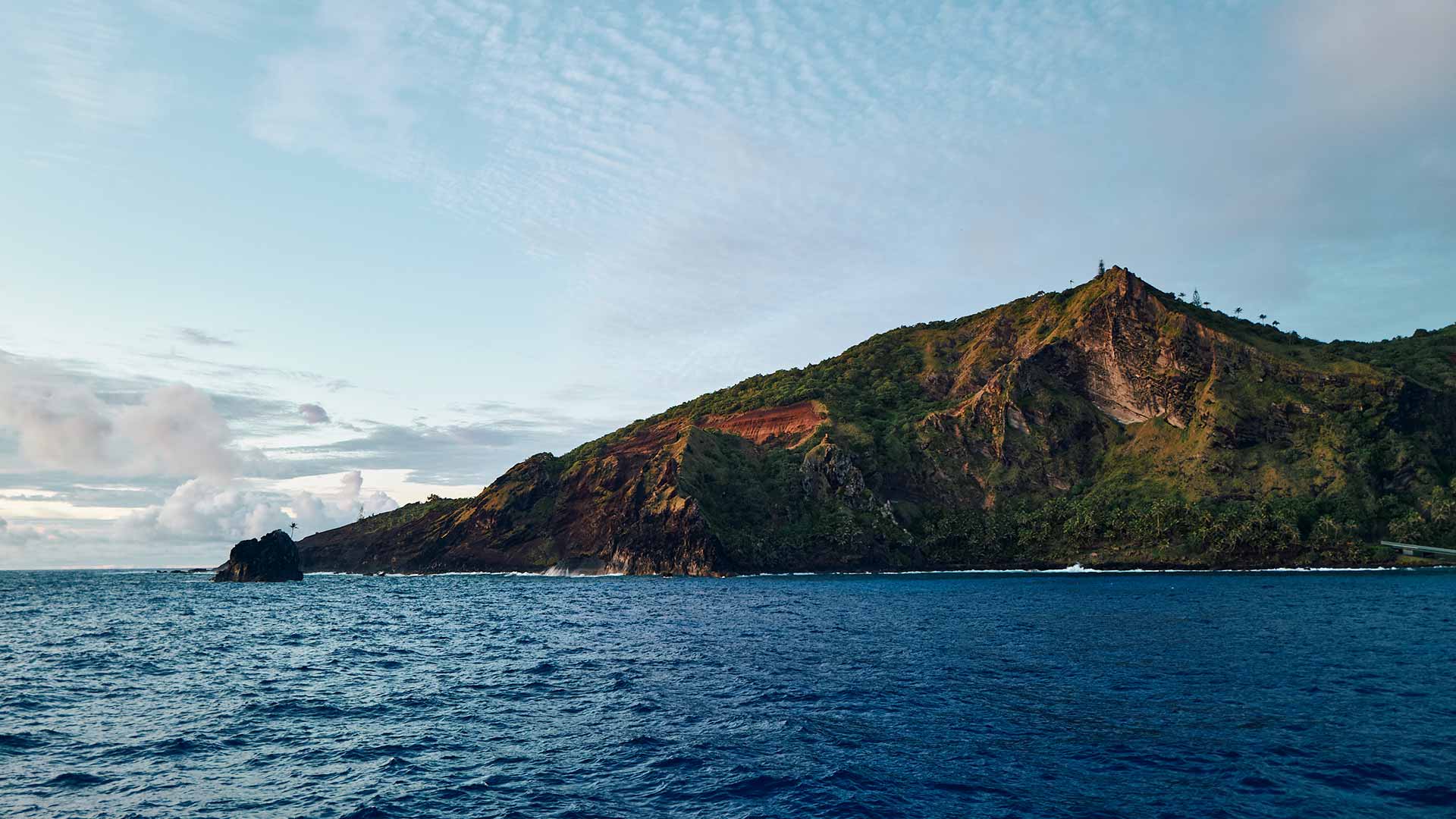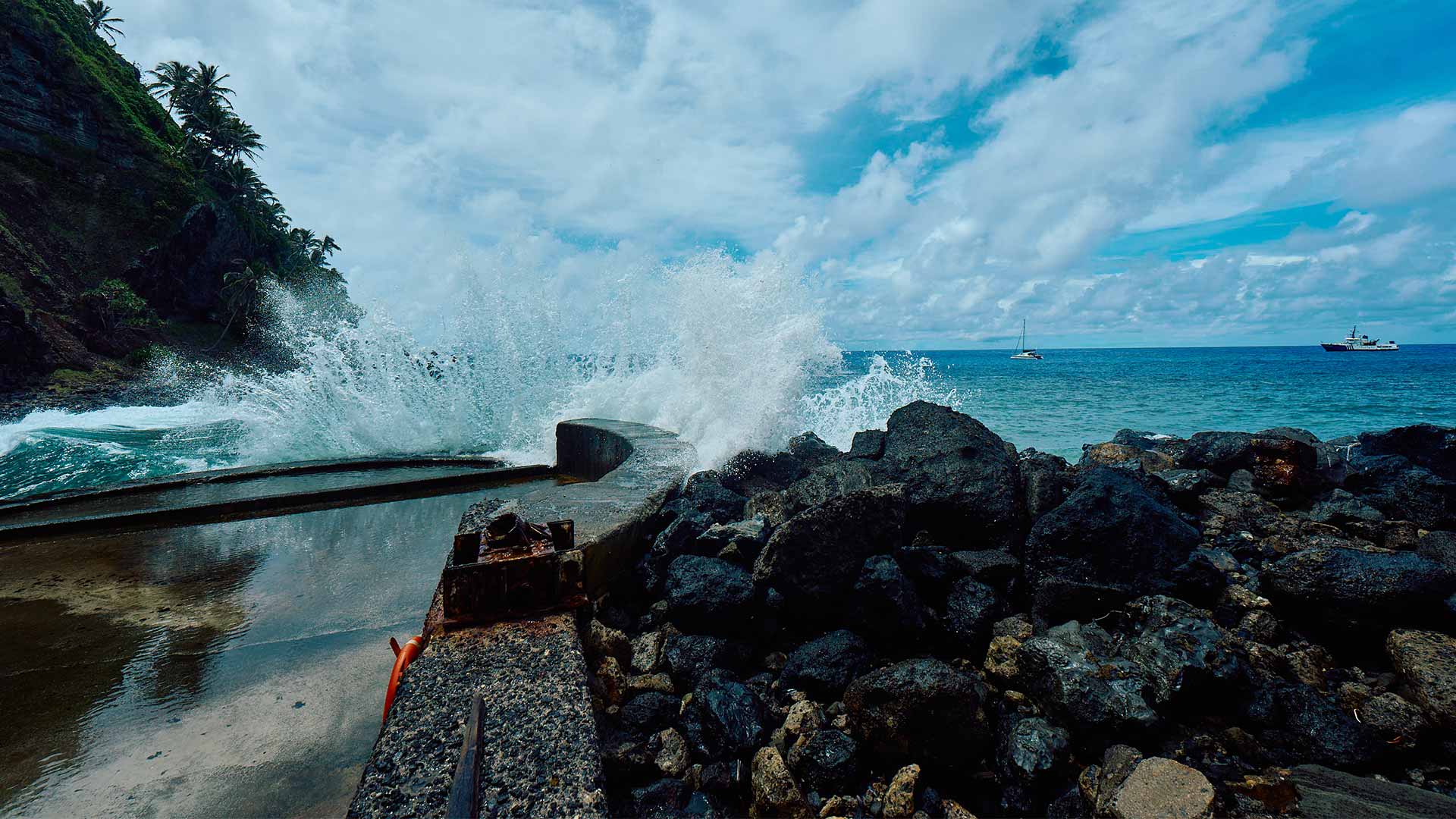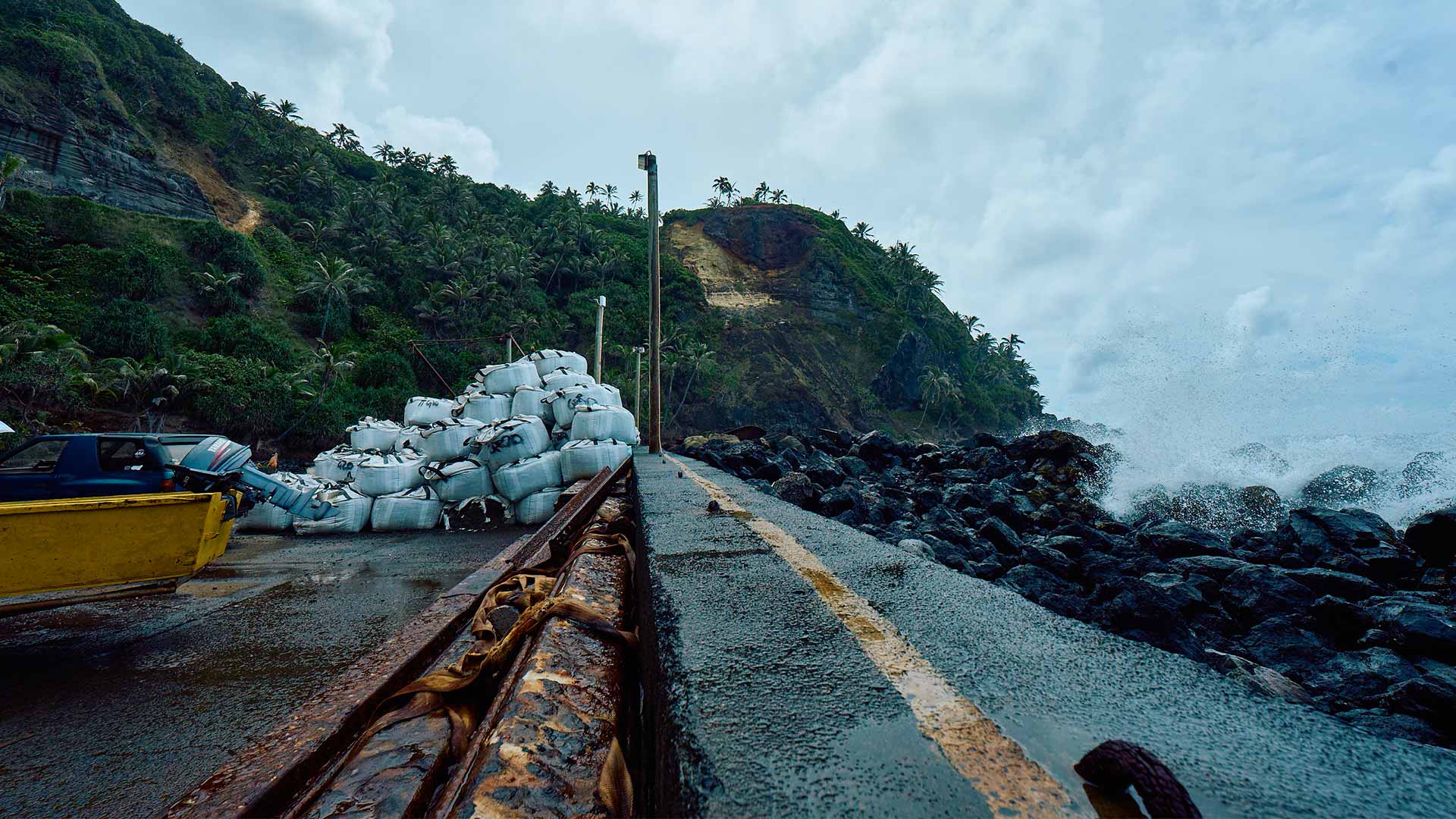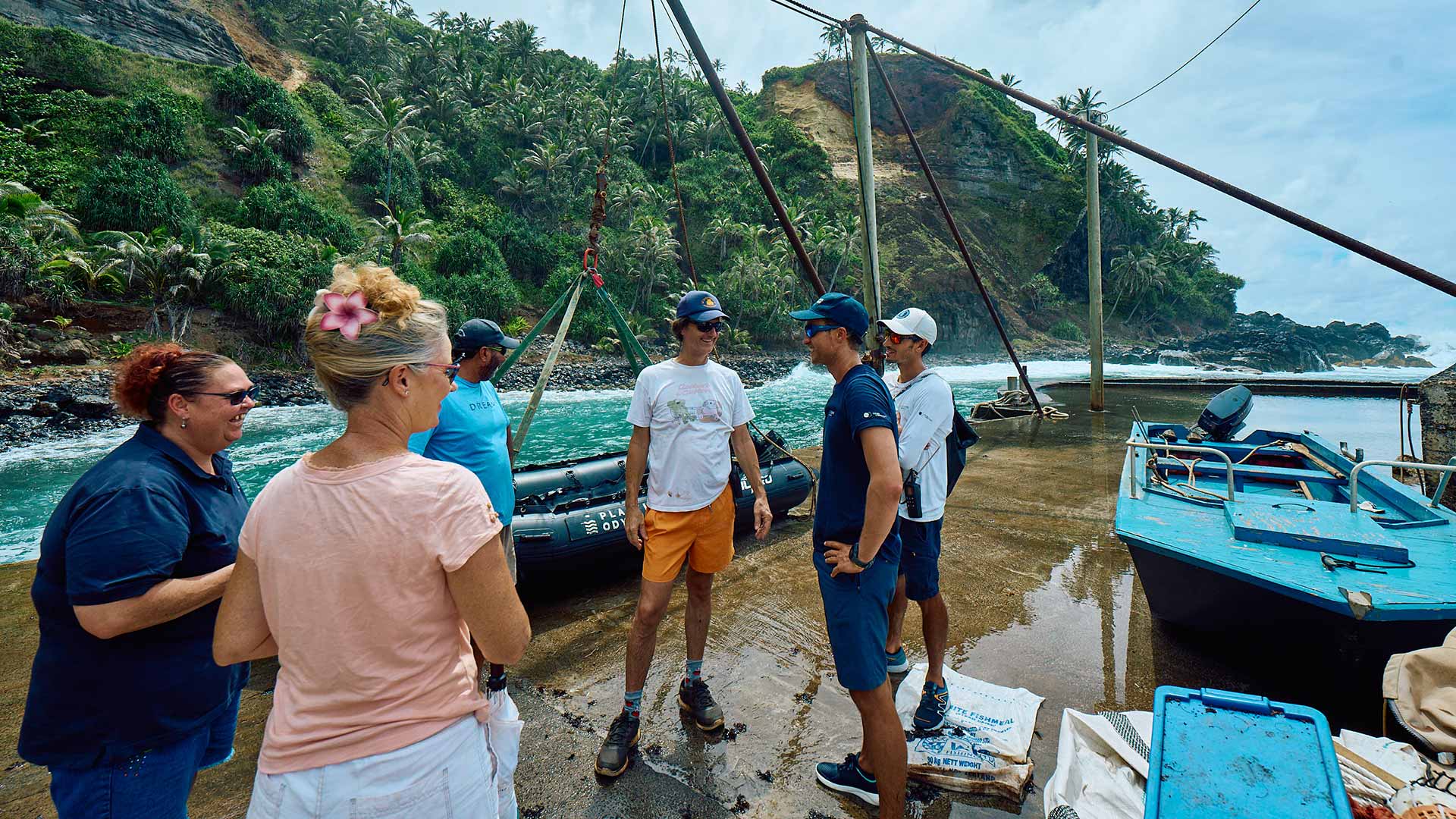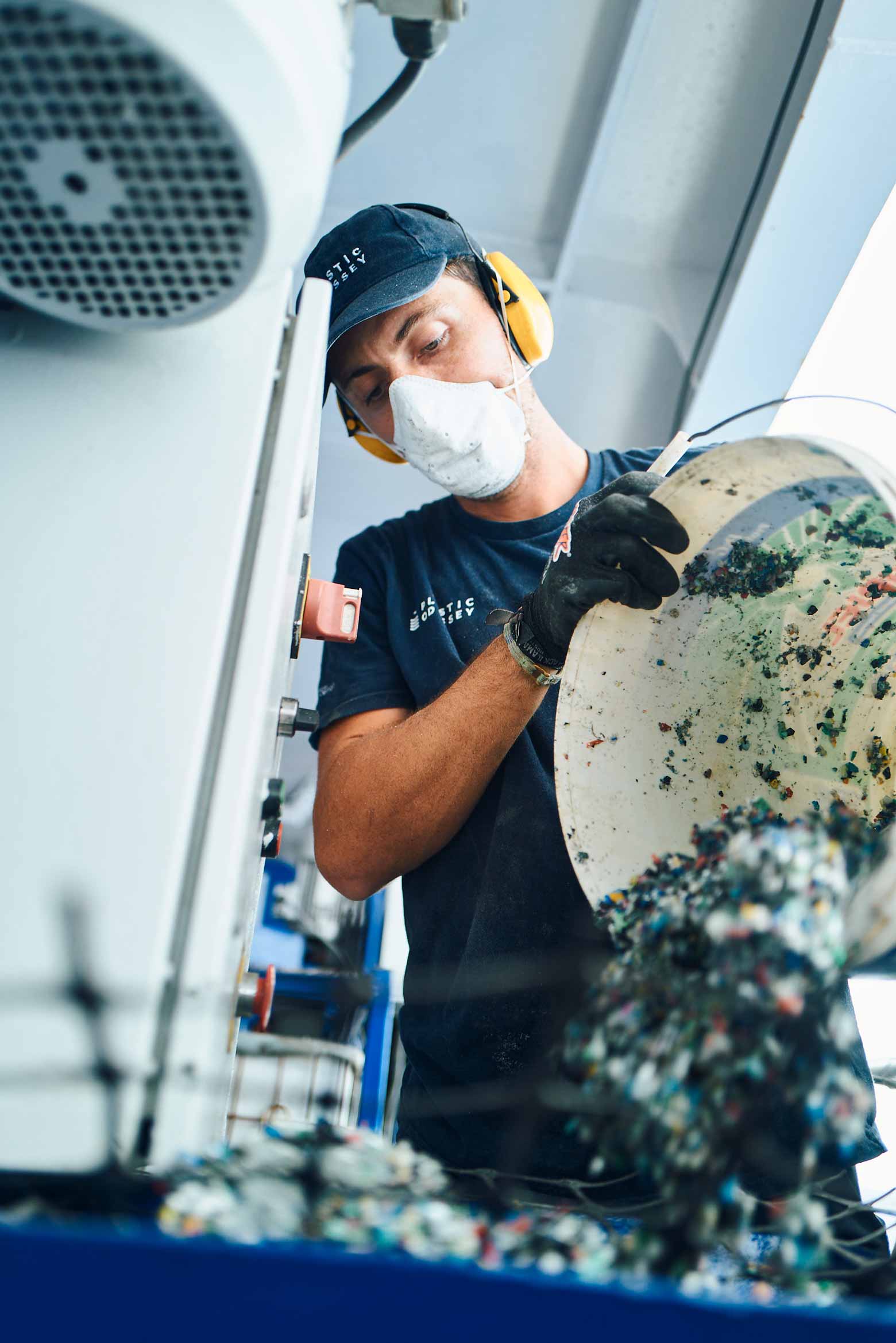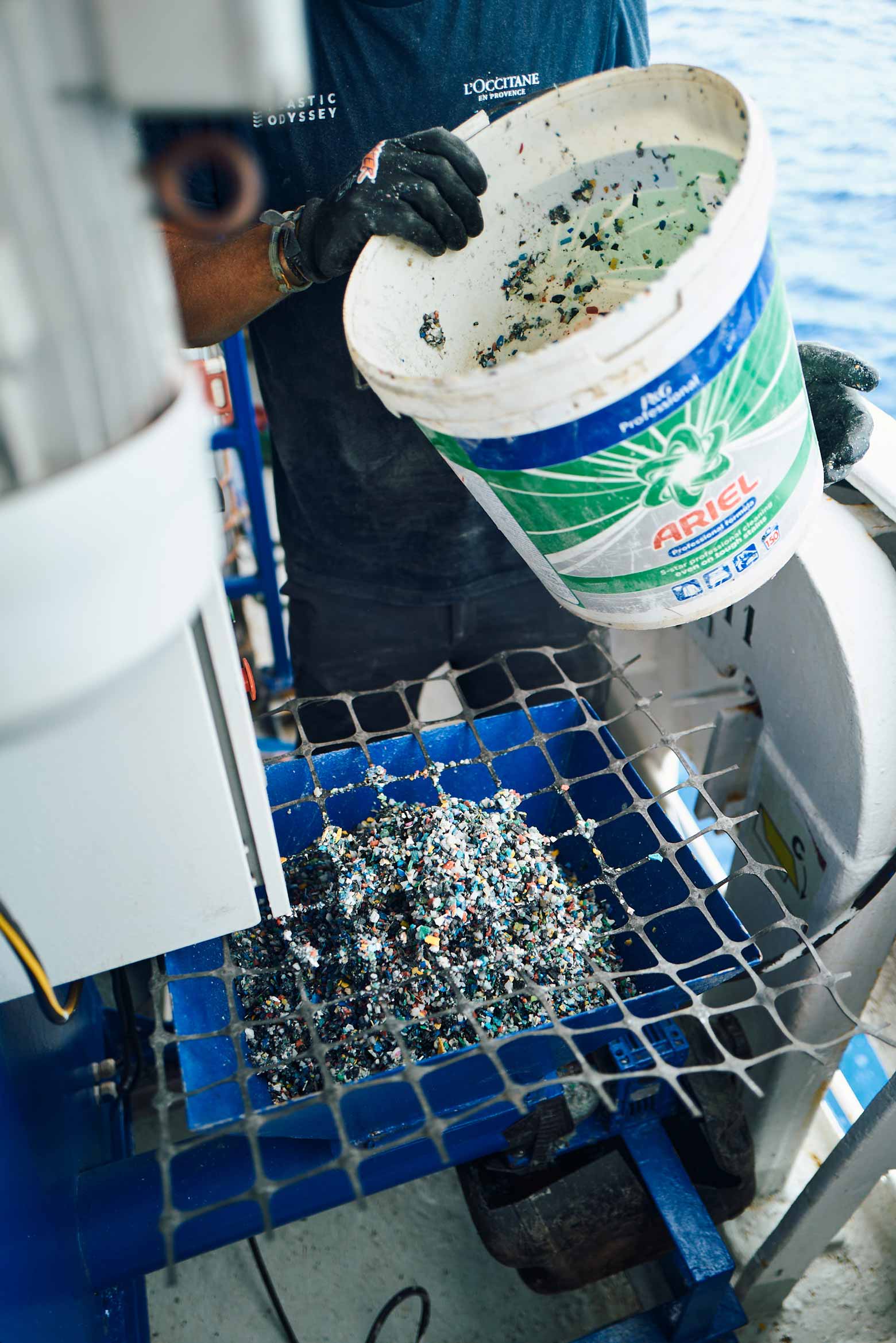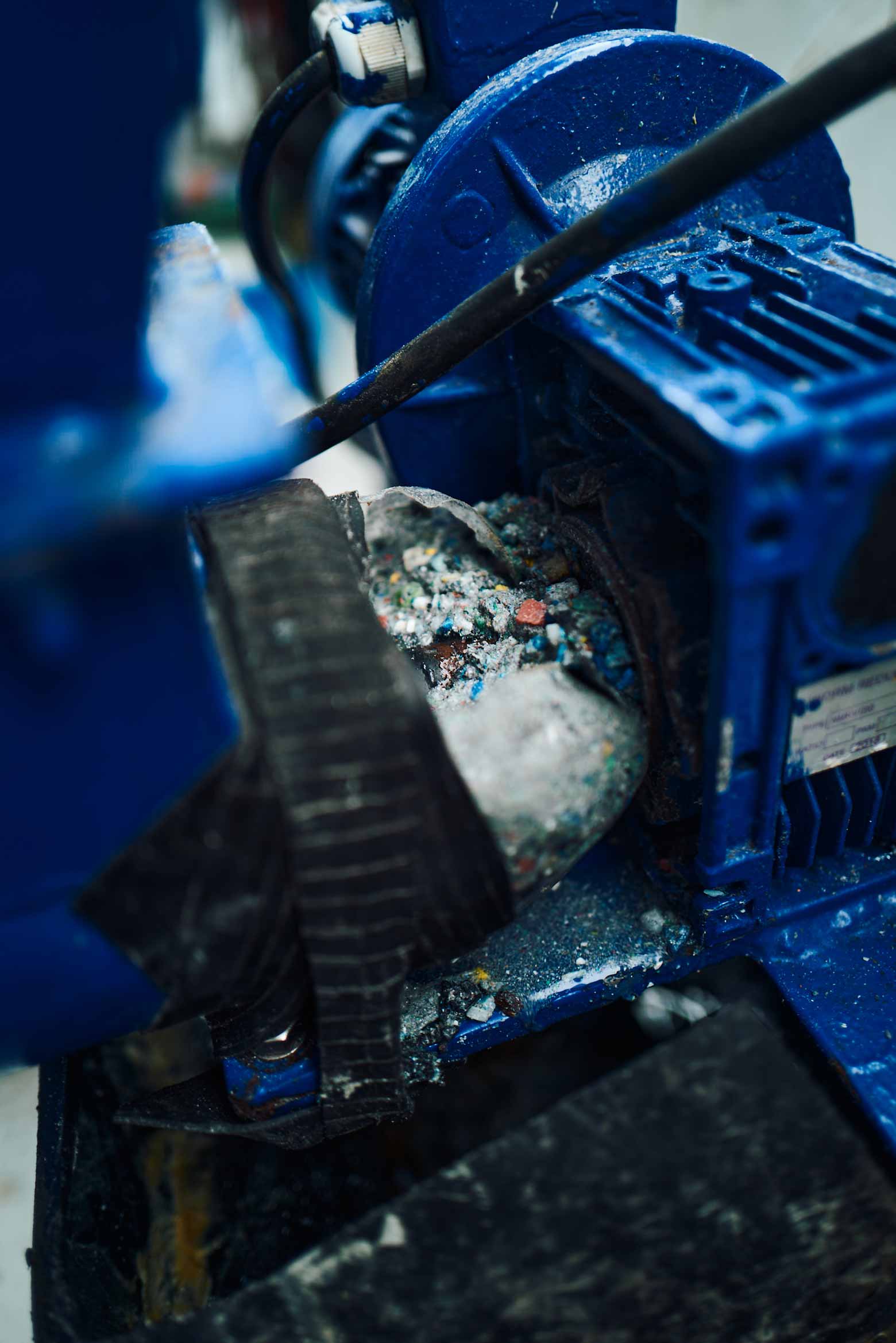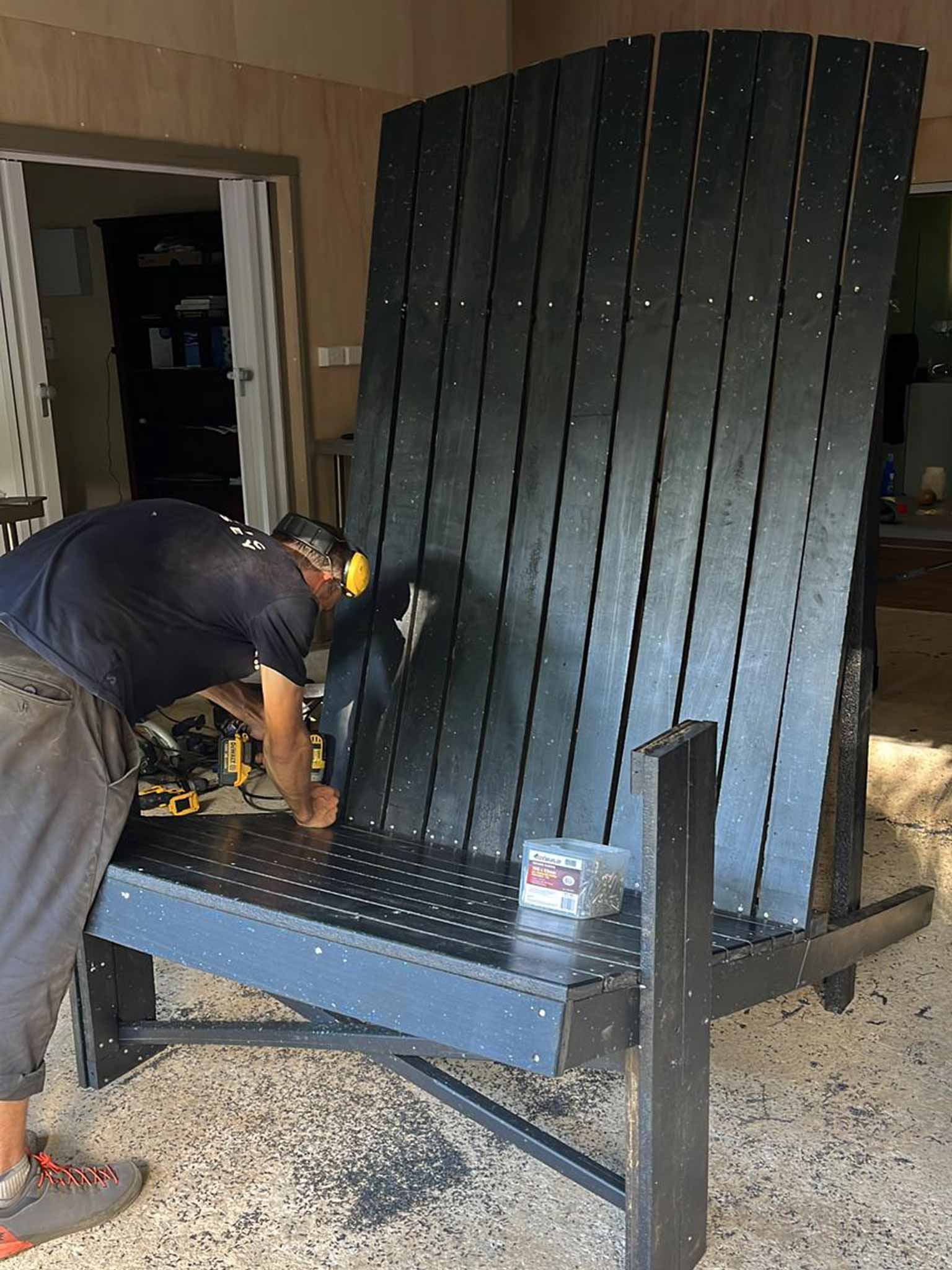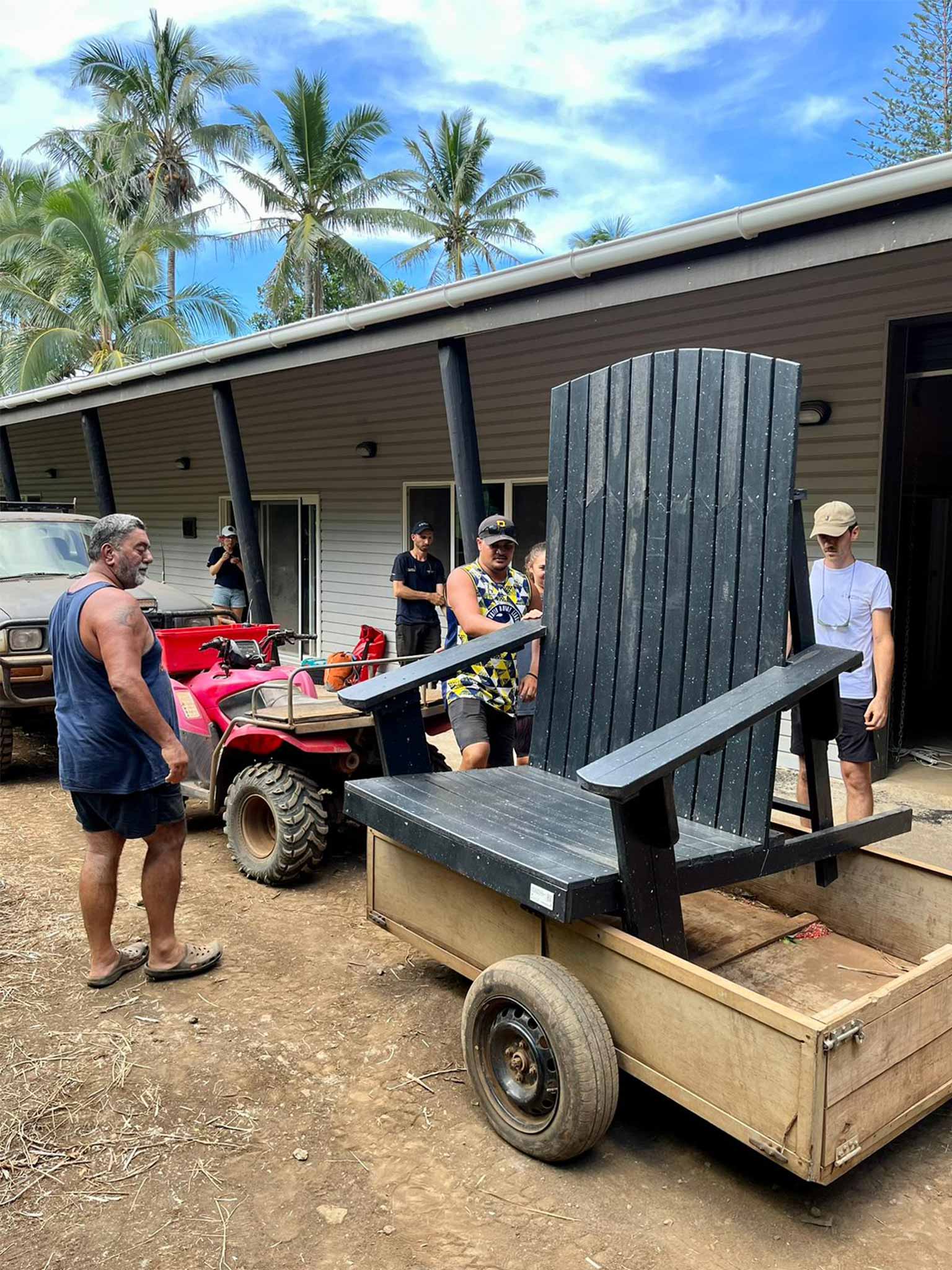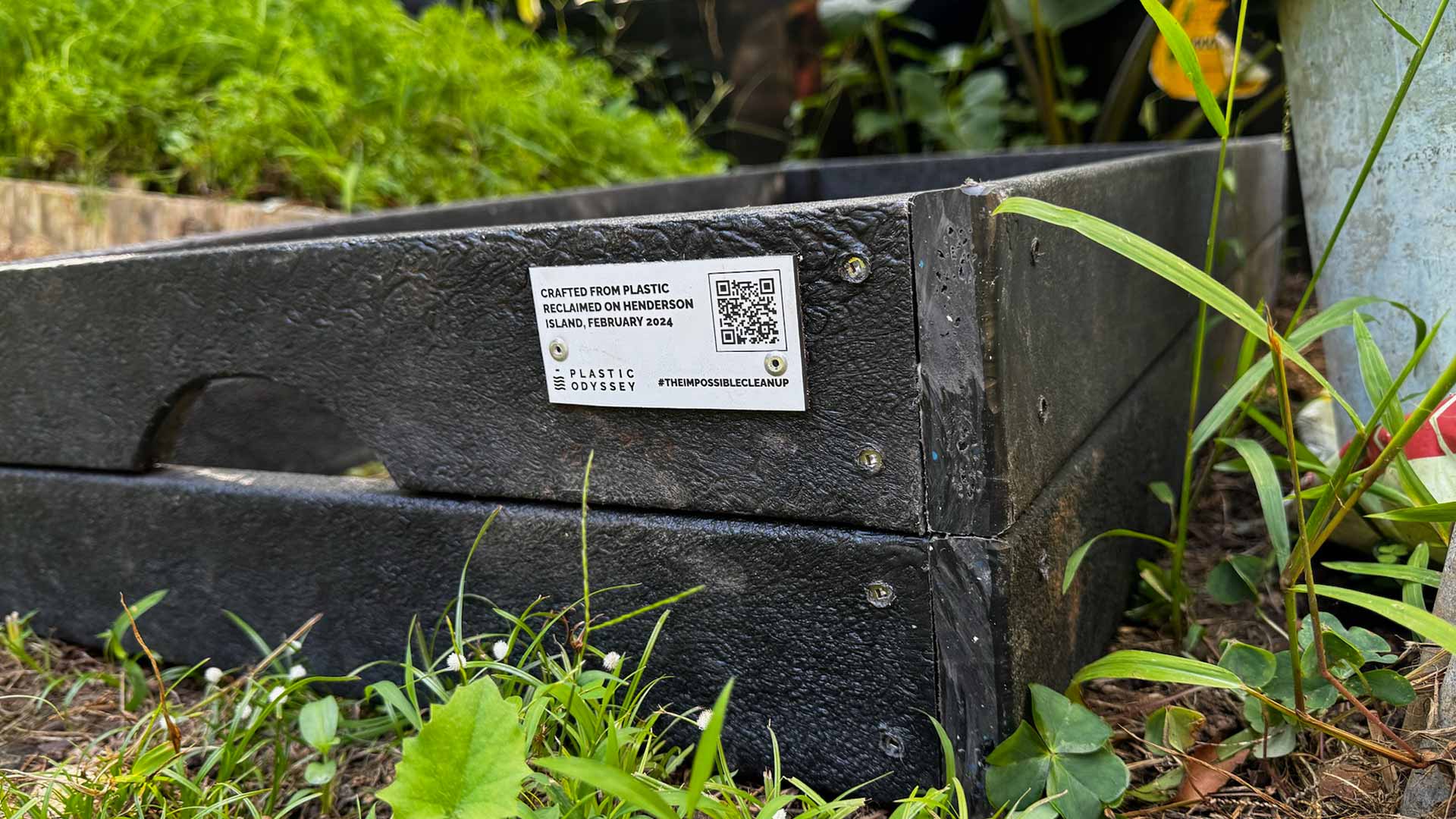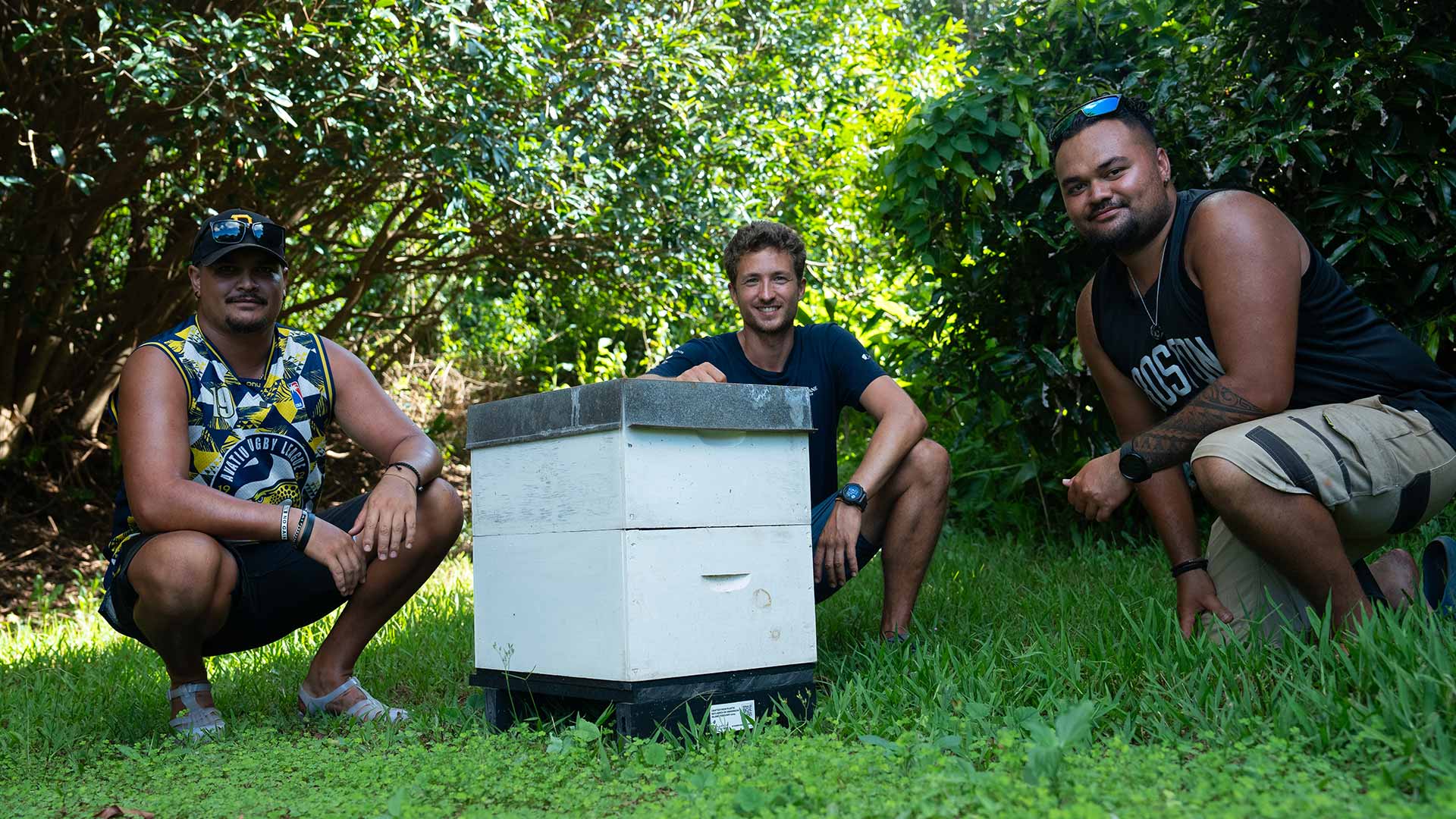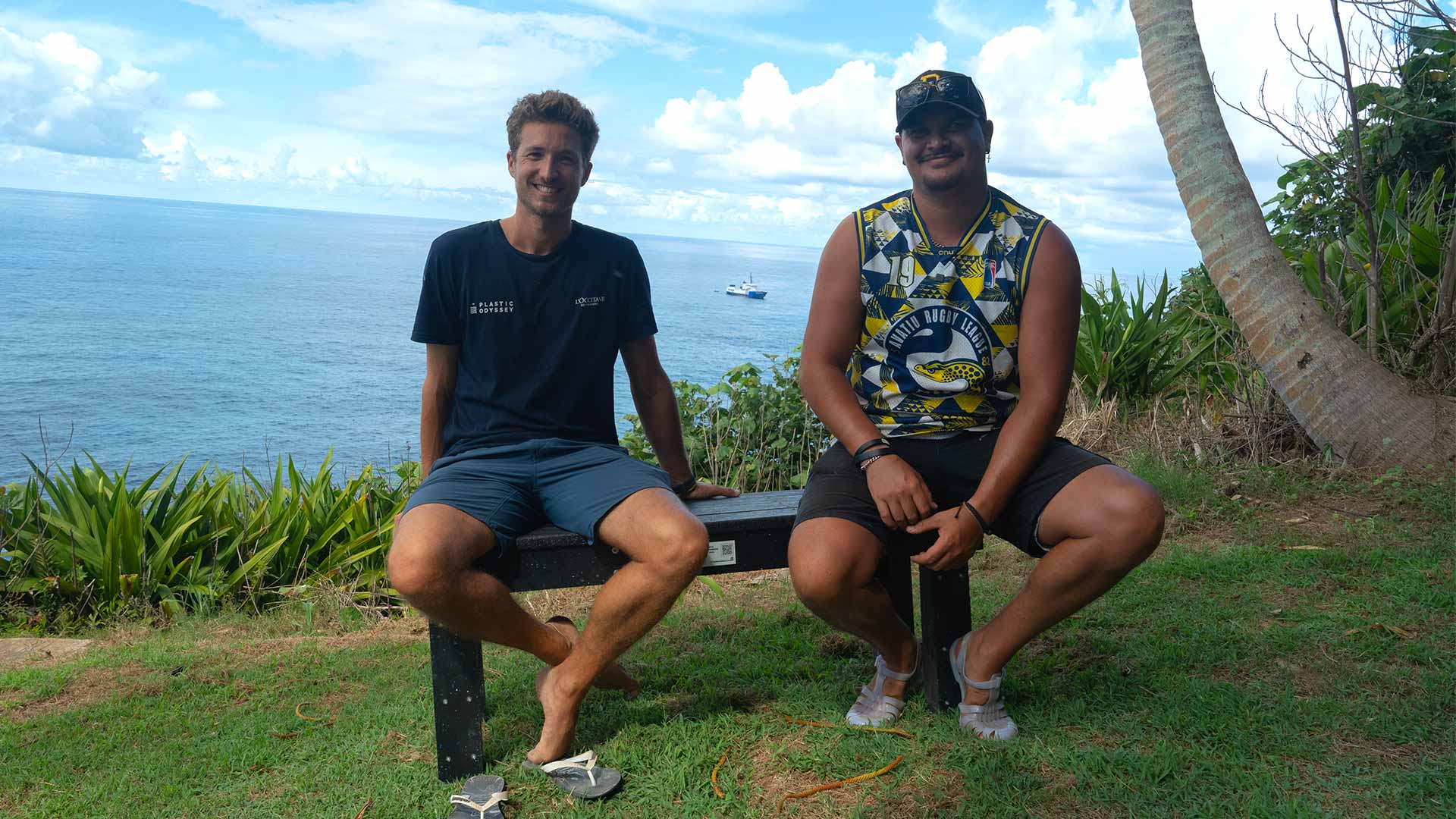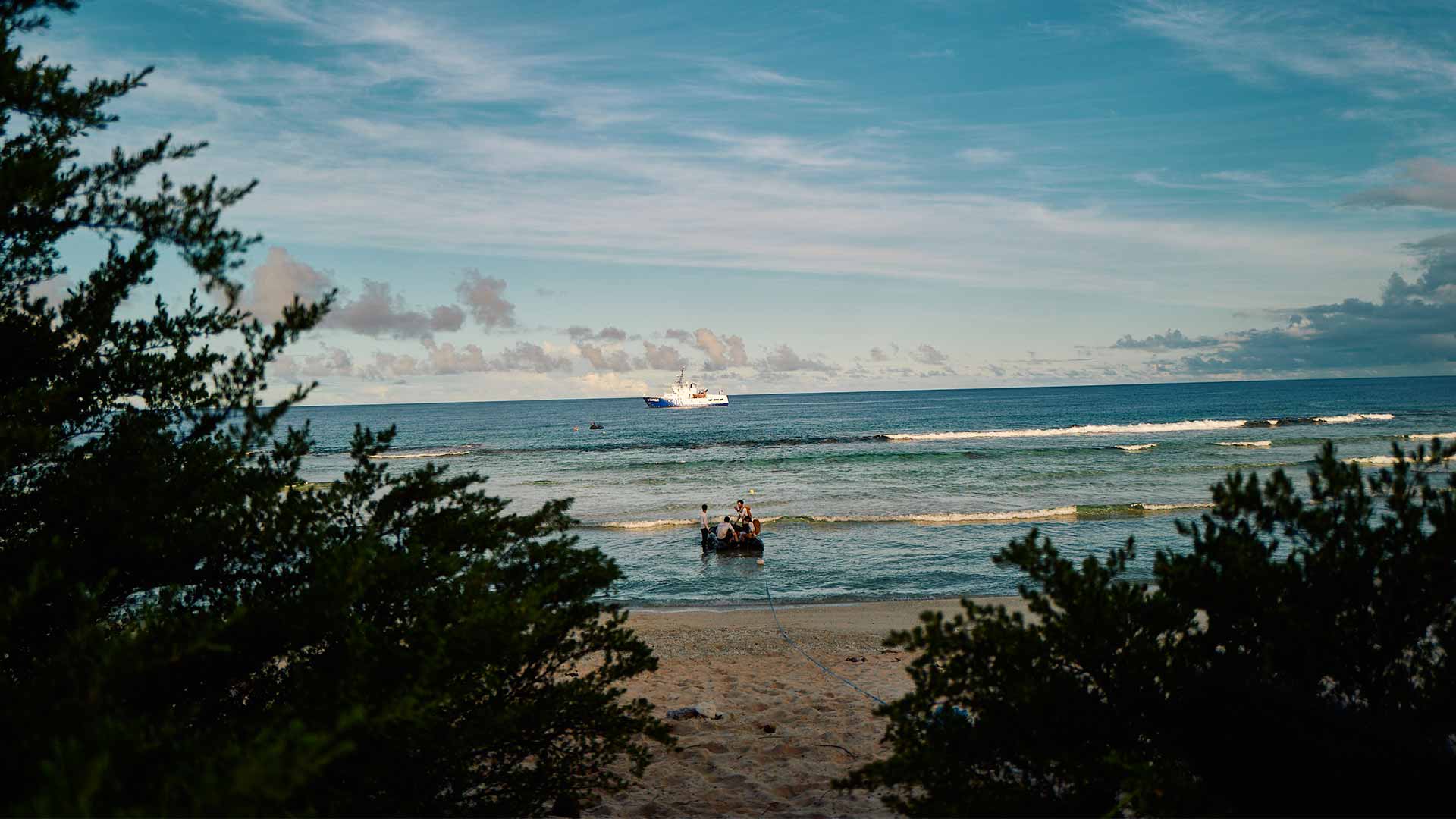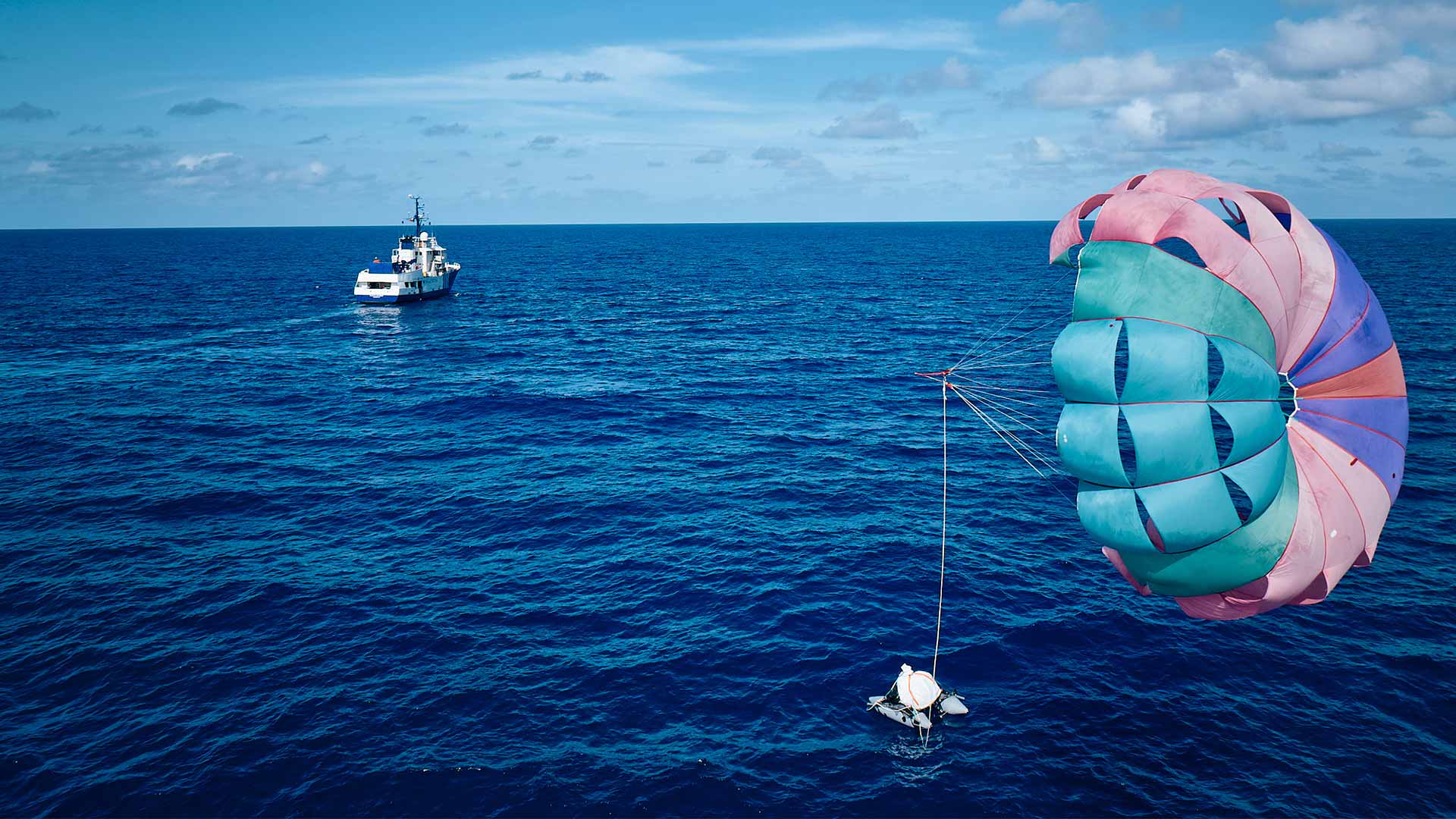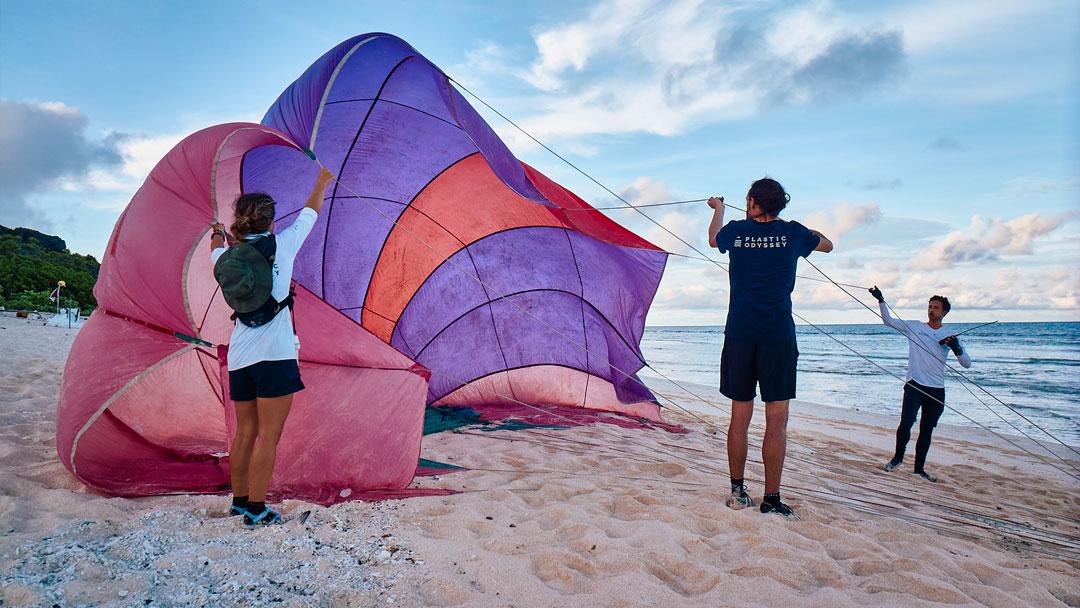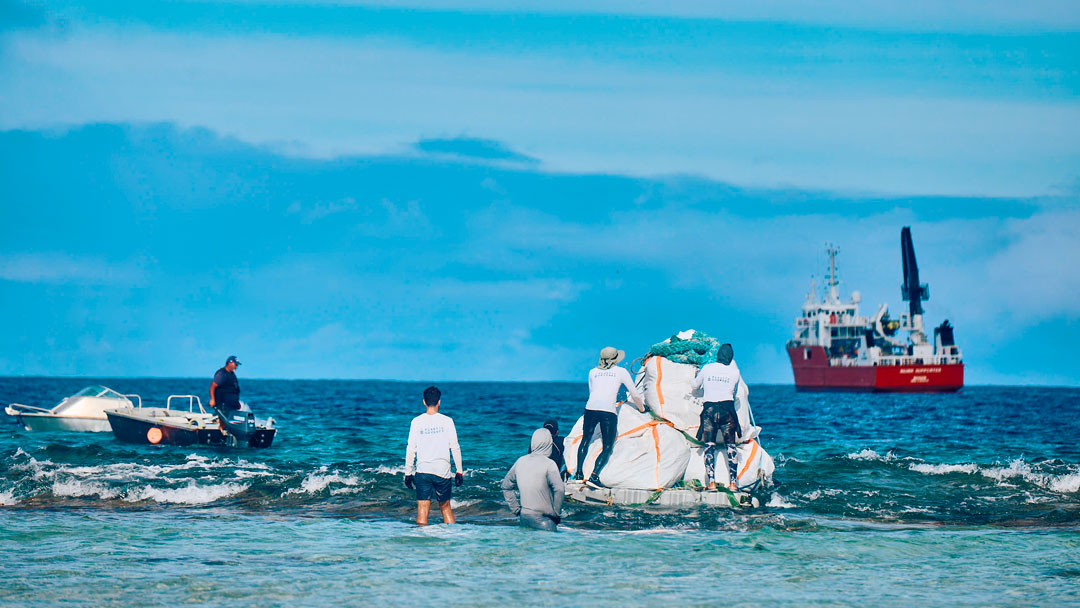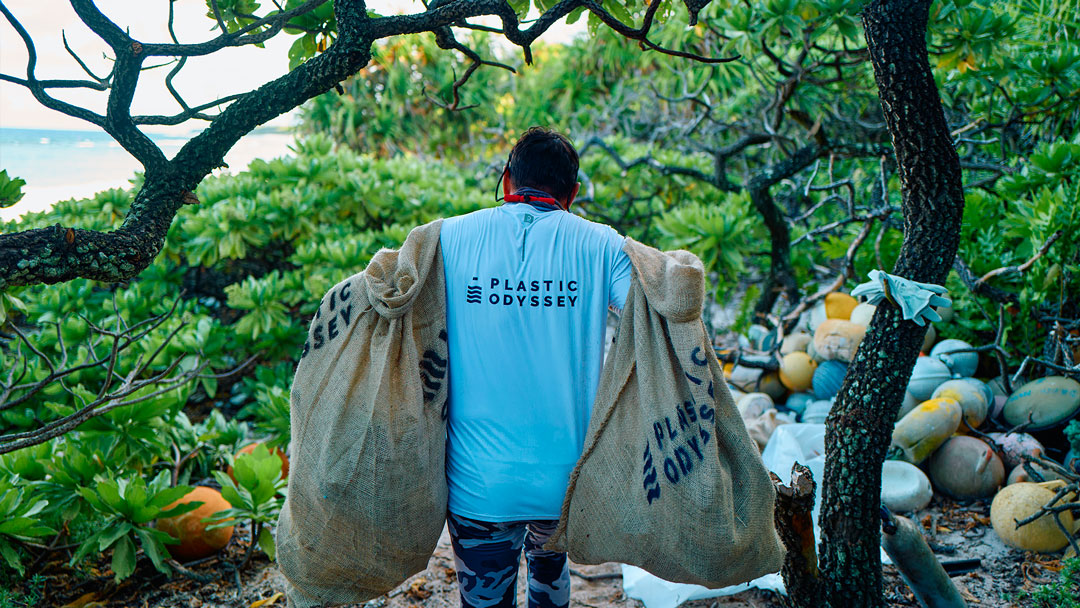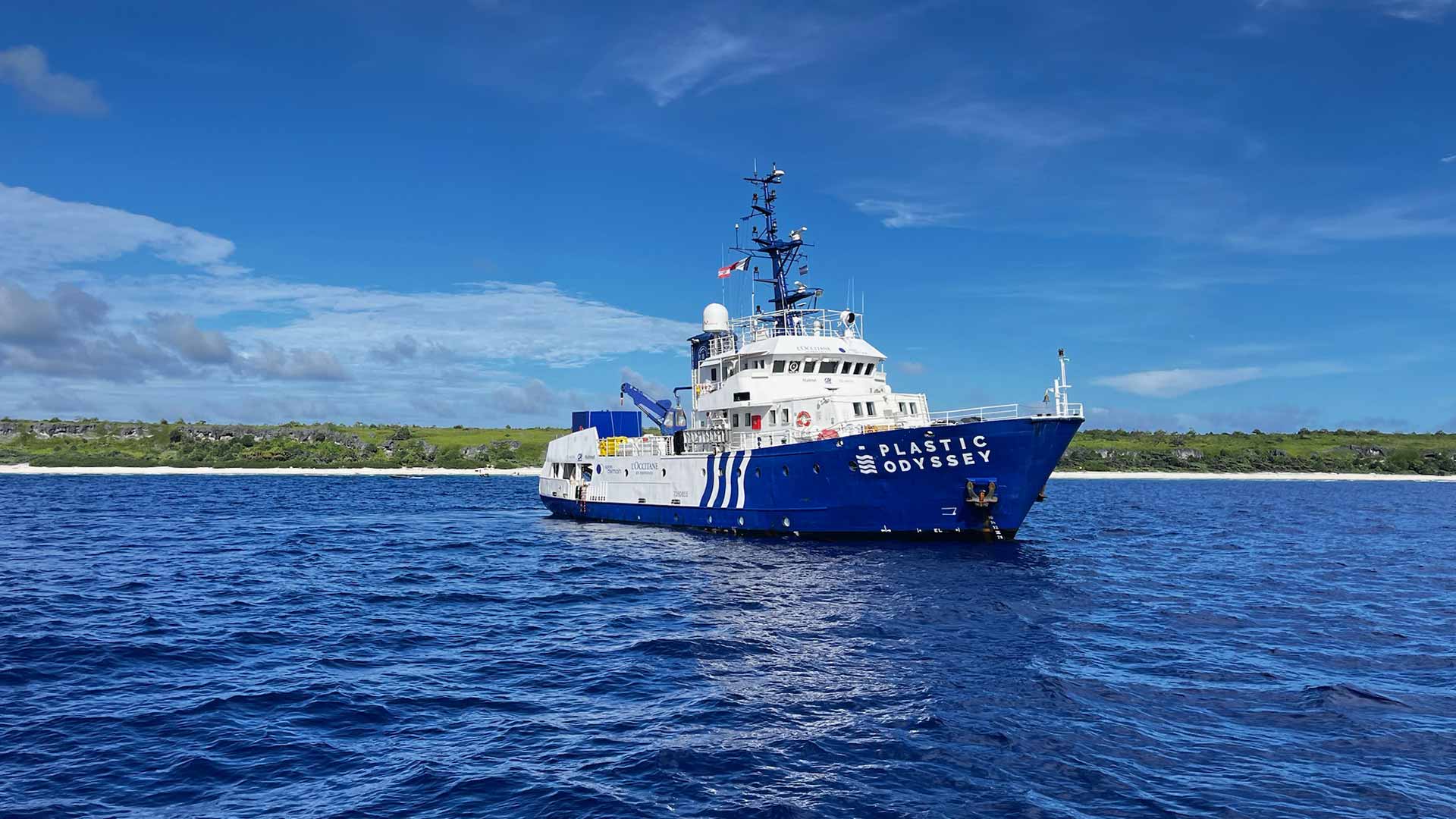
After spending a week on Henderson extracting tons of plastic waste polluting the island, we set sail as night falls. Heading towards Pitcairn Island.
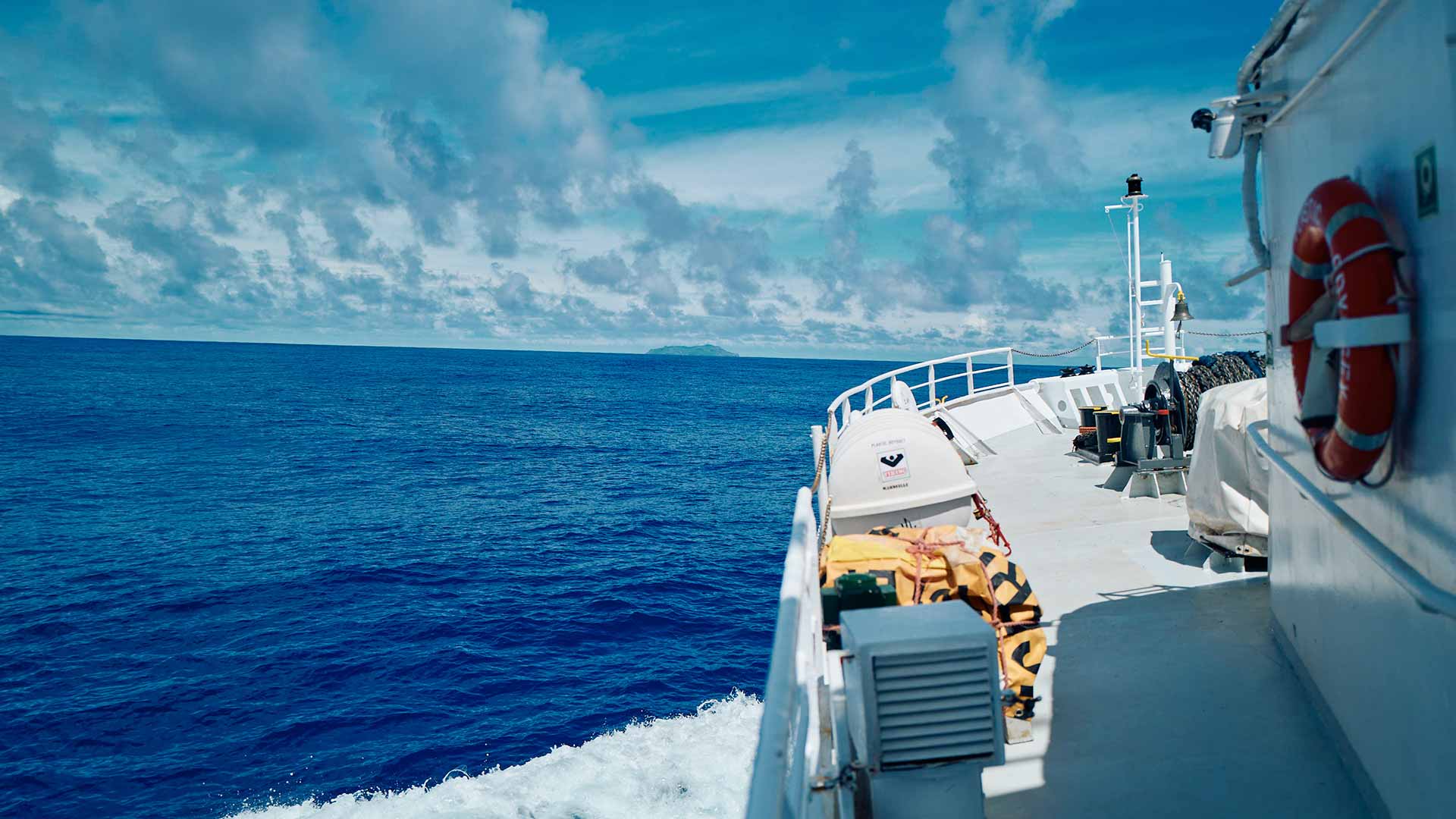
The vessel is loaded with bags filled with plastic waste, the vast majority of which has already been shredded, washed, and dried. Maxime and Baptiste worked tirelessly to transform as much plastic material as possible before our departure from Henderson. The work will continue at anchor, in front of Pitcairn. We’ve got around 15 hours of sailing ahead of us. The sea looks beautiful; the long waves reaching a height of 4 meters don’t shake us too much because the boat is relatively small compared to the wavelength of these waves coming from Antarctica. On board, the Robinsons team, who just spent 8 days in autonomy on the beach, reconnects with the comfort offered by the ship: freshwater shower, freshly ground coffee, fresh fruits, and foam mattresses… Luxuries that we didn’t really miss during this rustic period. We had all the technical equipment tailored to our needs, and the island we inhabited was very welcoming. Not even a mosquito to wake us up at night. Just the sound of waves and nesting birds.
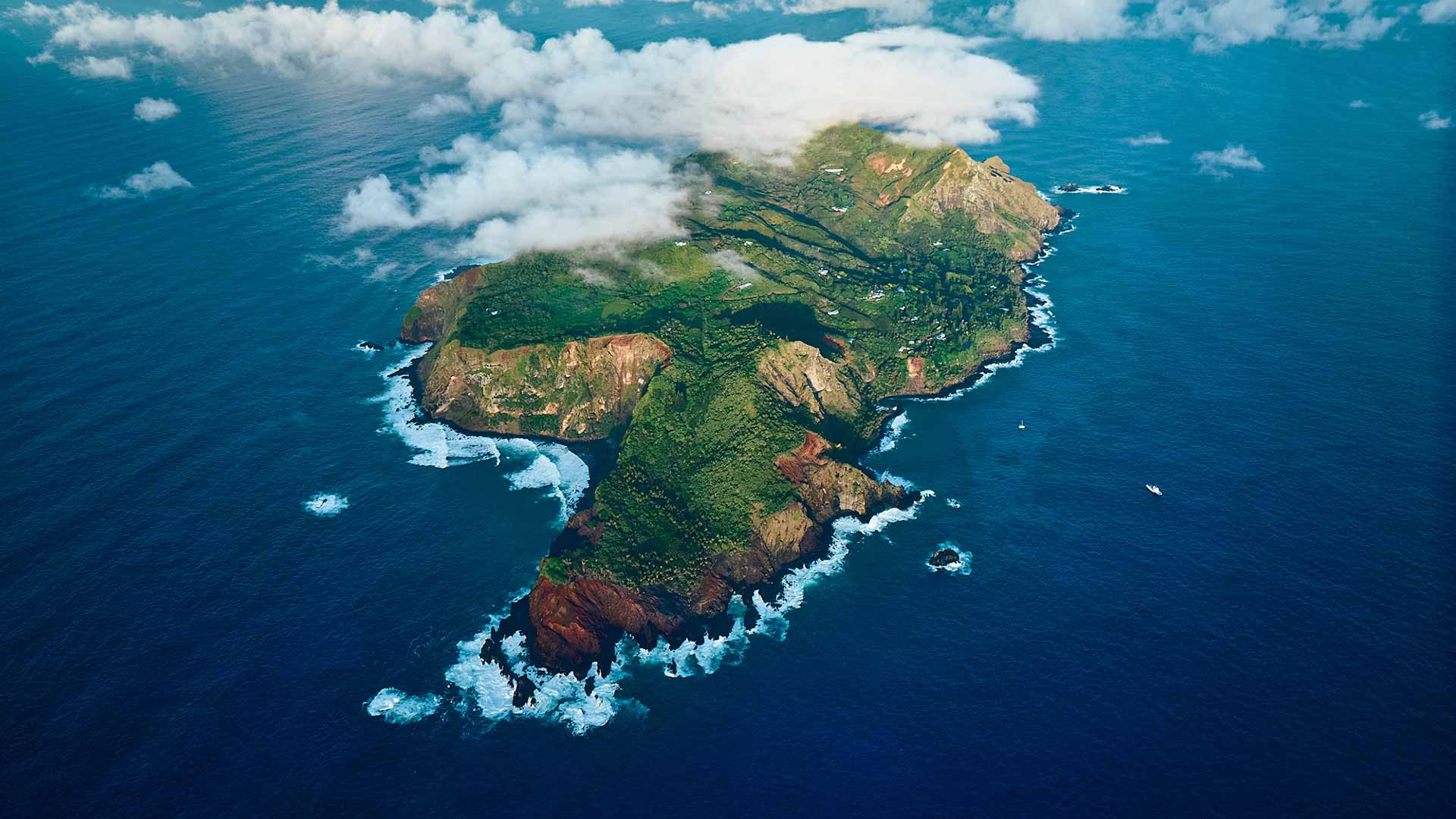
Upon our arrival in late morning in front of Bounty Bay, we receive a radio call on Channel 16 from the mayor of the town, Simon, who warns us of the visit of Brenda, the representative of the border police on board.
A few minutes are enough to validate the necessary administrative documents for our entry into the territory, and we can send a first convoy to land. The boat remains anchored a few tens of meters from the shore. No dock in Pitcairn, only a cove protected by a piece of concrete acting as a port.
We approach the entrance of the port in a Milpro Zodiac. Simon, Yoann, and Alexandre are aboard. But as we approach the passage leading to the protected area, the 3-meter waves break and make access visibly impossible. We approach slowly between two swells, and once nearby, a well-marked burst of gas allows us to reach the other side of the concrete before the wave catches up with us soon after.
We narrowly avoid falling into the water twice; our boat lands on the quay despite us with the force of a wave and leaves the front of the boat dry while the back descends dangerously. On land, the islanders burst into laughter watching us maneuver. They hand us the hook of a makeshift crane installed on the quay, and in a few seconds, they lift us above the swells. We finally disembark, happy to have reached land without having to inflate our life jackets in these truly inhospitable waters. We anticipated facing this kind of danger near Henderson, and, regrettably, we had let our guard down!
On land, we are warmly welcomed, and we are taken to visit the storage site of the 23 Big Bags that the Silver Supporter brought here. The residents explain that they want to keep them; they want to reuse the nets to make enclosures and the buoys to recycle or reuse them. We discover a storage site on the heights of the island built in 2019 to accommodate Henderson’s waste. The first expedition that aimed to clean the island had brought back nothing, leaving this hangar empty for years.
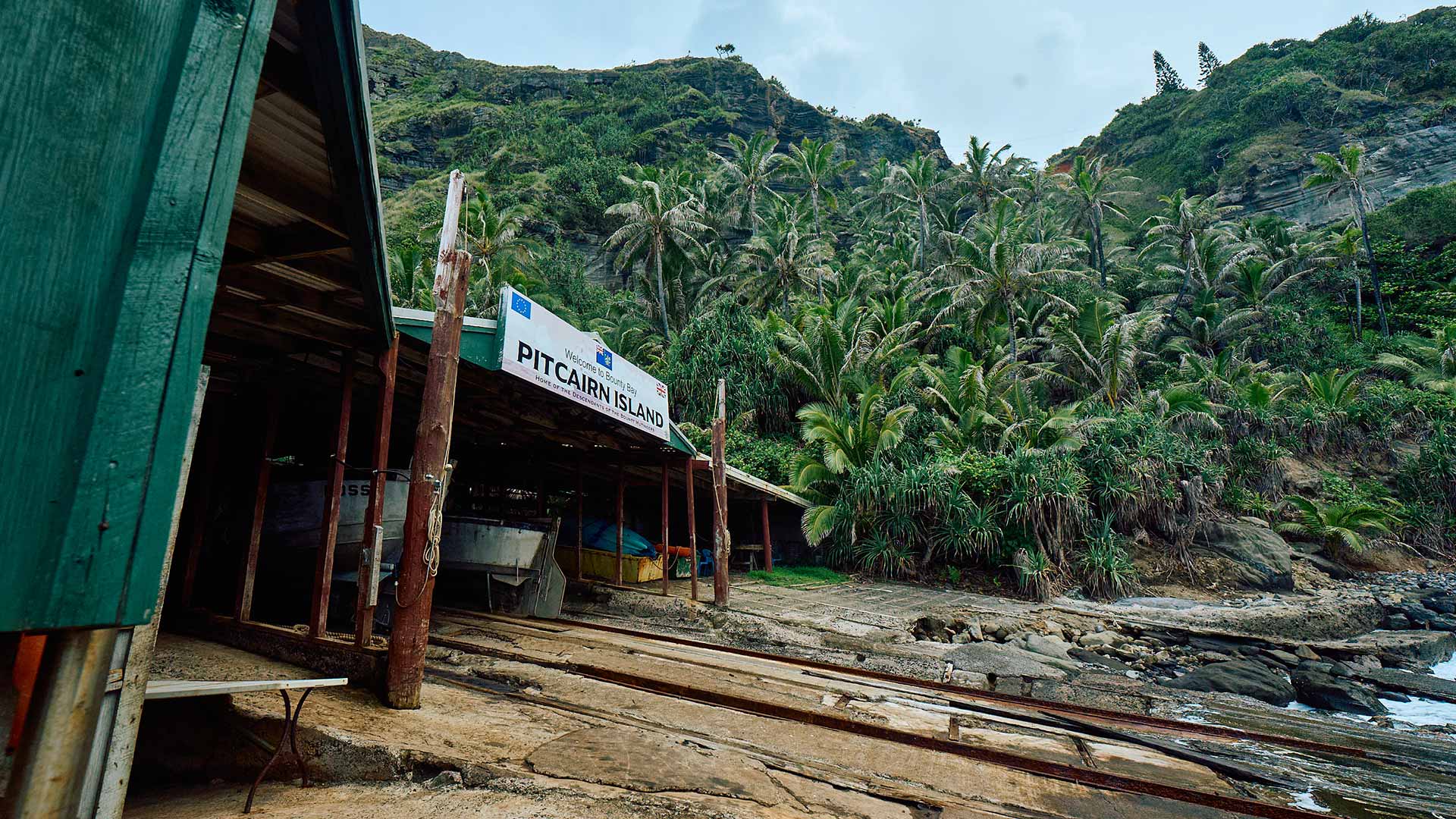
The island is equipped with a large plastic shredder that has never been used. We also discover that here, only ultimate waste is deposited in landfills. There is a culture of material recovery, such that each household appliance is completely disassembled by the residents before being discarded. Very few wastes are thus recovered and stored.
After some exchanges with the residents, we propose to make furniture for the island that could be useful to them. They suggest making public furniture for residents and tourists and associating it with a message that reminds them that this plastic has been recycled from the waste of the world’s most polluted island, located just a few nautical miles away.
Onboard, we hurry to finish shredding all the waste, and we start the extruder to make the first boards. Simon has an idea: to make a giant lounge chair and place it on one of the viewpoints of the island, facing Henderson Island.
Within a few hours, Baptiste and Maxime produce stunning raw boards, which Pamphile then refines. Pamphile is a sailor, but he has training and experience in carpentry. He enjoys working with these boards that he enhances. With Simon, he sands and assembles them, highlighting and bringing out the unfused plastic pieces in different colors.
In total, we’ll have produced over 100 recycled plastic profiles and assembled pieces of public furniture for Pitcairn: a bench, a planter, a beehive stand, a giant chair… The remaining recyclable plastic will be transformed on board during workshops scheduled in the Polynesian islands.
The loop is closed for the plastic that finds a new useful life, and slowly, we are preparing to turn the page on this crazy adventure of the Impossible Cleanup of the world’s most polluted protected island, Henderson.
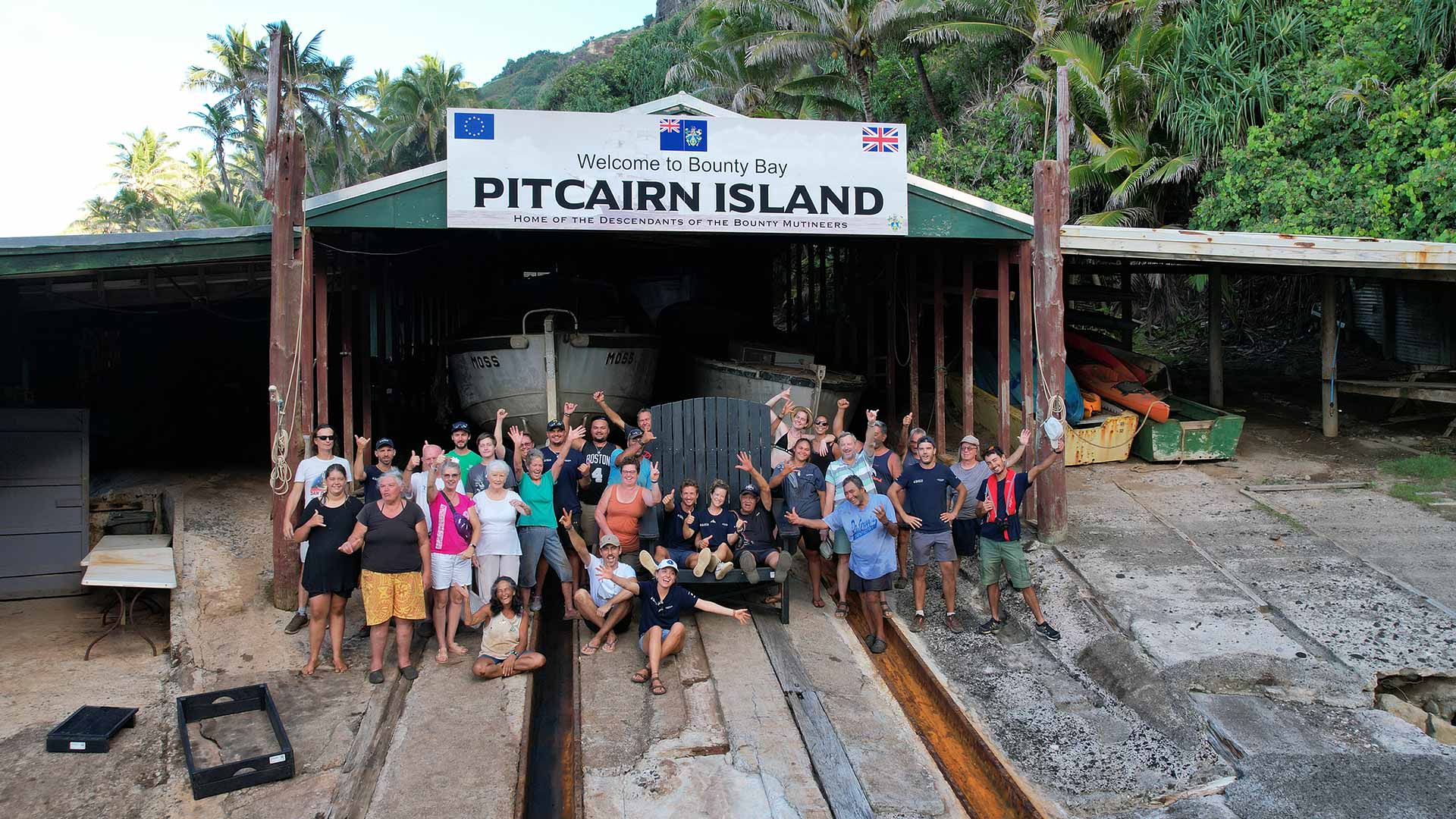
Other news
Days 9 & 10: Transformation of Plastic Waste
After spending a week on Henderson extracting tons of plastic waste polluting the island, we set sail as night falls. Heading towards Pitcairn Island....
Days 7 & 8: Last Days on Henderson
In the early hours of the morning, we traverse the long kilometer to the southern end of the beach, laden with water and empty Big Bags to commence the last waste collection....
Day 6: Crossing the Coral Reef by Air
Today is Sunday, and we're trying to mark the occasion by treating ourselves to a lie-in. A few hours of free time: some go for a run, others explore the extremities of the beach....
Day 5: First Parachute Trials
The usual rhythm takes shape: by 6 o'clock, most team members are already operational. This morning marks the beginning of the major collection!...
Day 4: Arrival of the Silver Supporter
If the Silver Supporter keeps its promise and joins us today, it could save us from a complex logistical problem by retrieving a significant portion of the heaviest bags....
Day 3: The cleanup is intensifying
Operational from 6 in the morning, we start working before the sun overwhelms us. By 7 o'clock, the temperature rises sharply and becomes almost unbearable....
Day 2: First Waste removal
The sun has risen on the East beach of Henderson Island, where 12 of us have spent the first of our seven days on site. As quickly as possible, to escape the scorching sun, we spread out along the entire length of the beach and begin gathering the Big Bags....
Day 1: Installation and launch of the cleaning operations
After a first night off the coast of Henderson Island, the Plastic Odyssey teams gather early to set foot on the East beach of the island. Today's missions: set up the camp, carry out surveys, and test the systems for transporting plastic waste packaged in Big Bags......
First steps on Henderson Island, covered in waste
On Monday, February 12, 2024, the Plastic Odyssey vessel and the expedition crew arrived off the coast of Henderson Island. Circling the island from its southern side and taking advantage of favorable navigation conditions....
